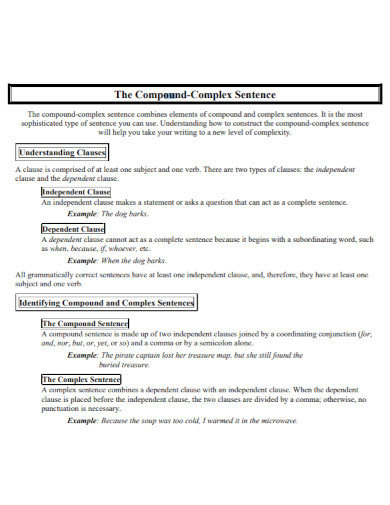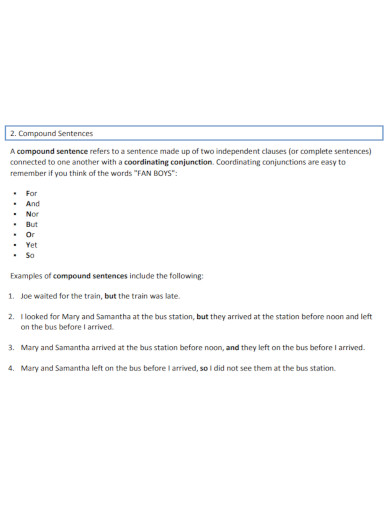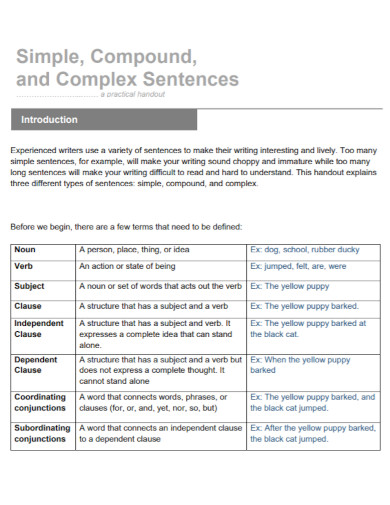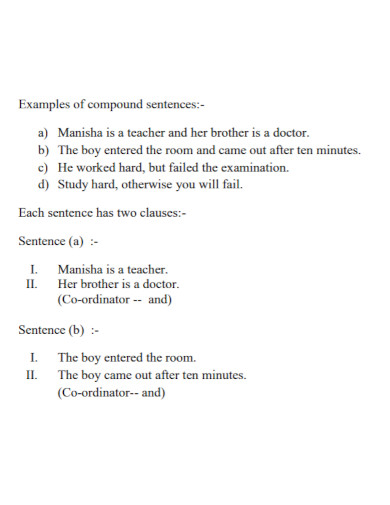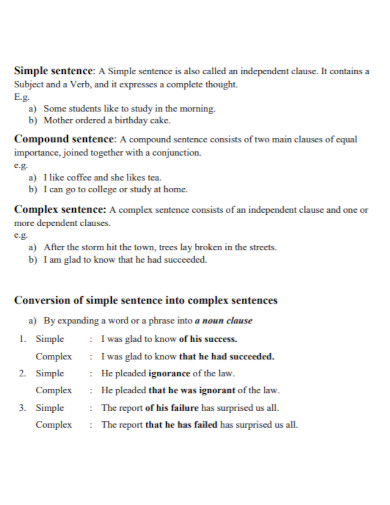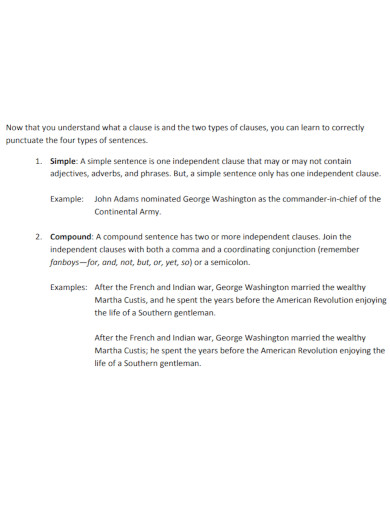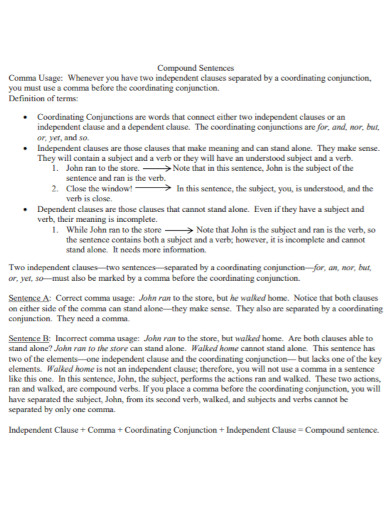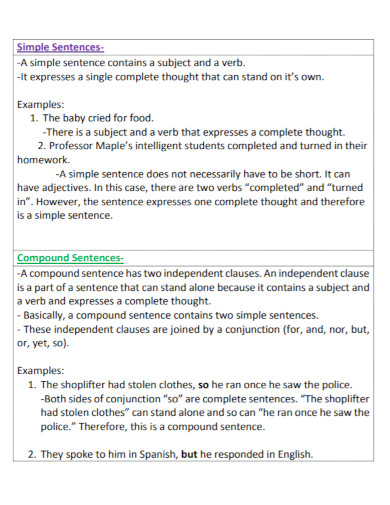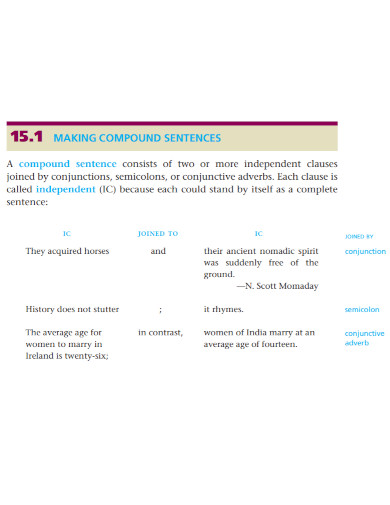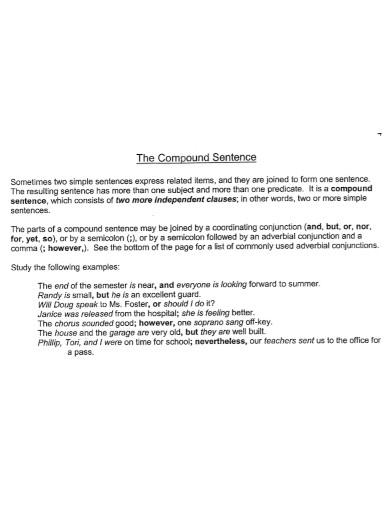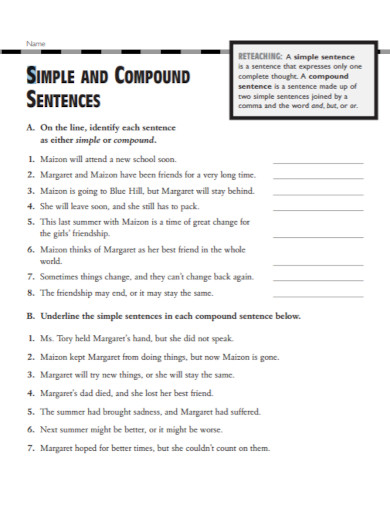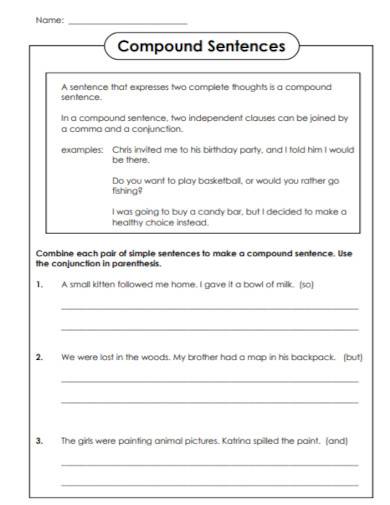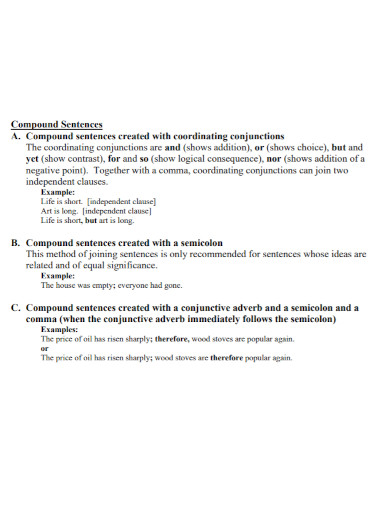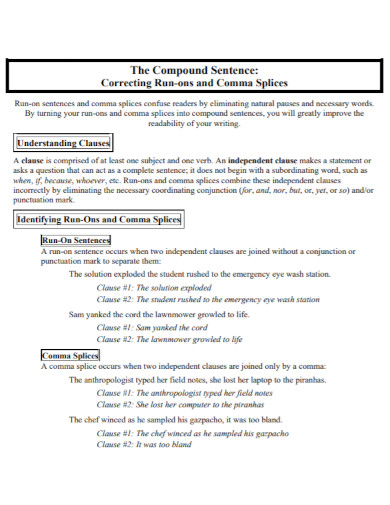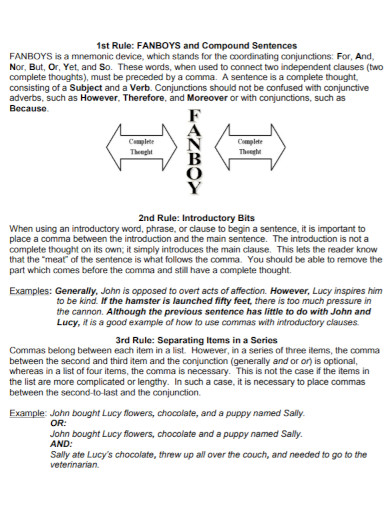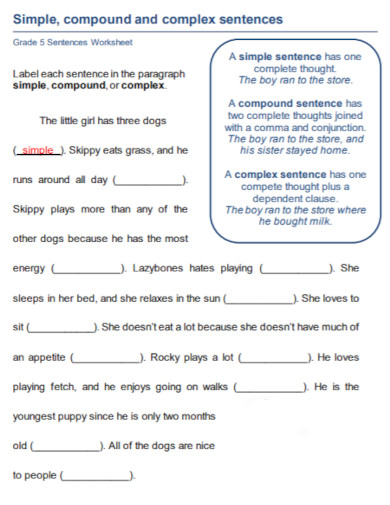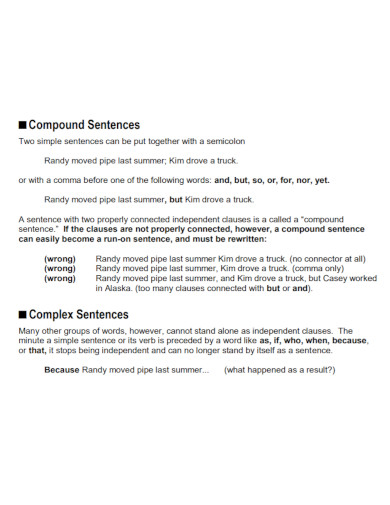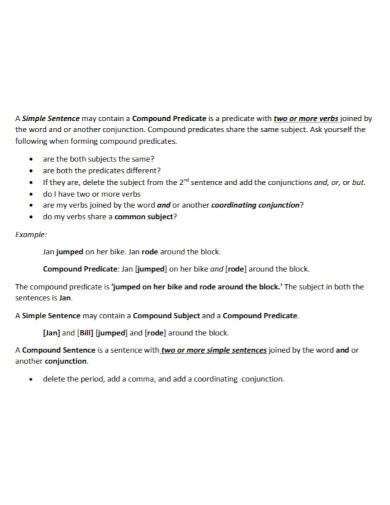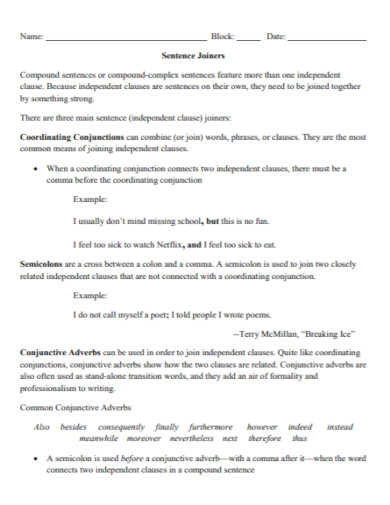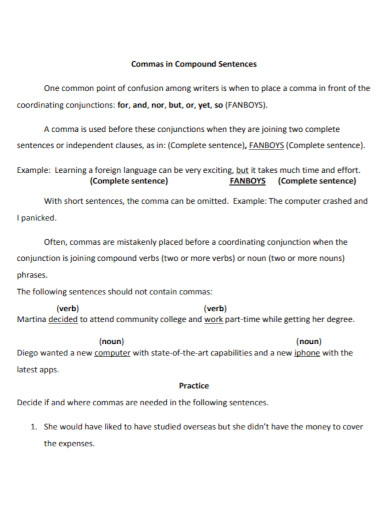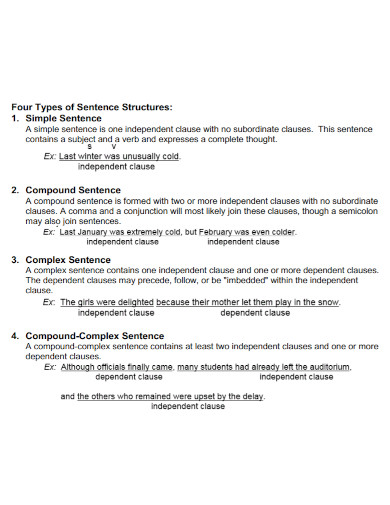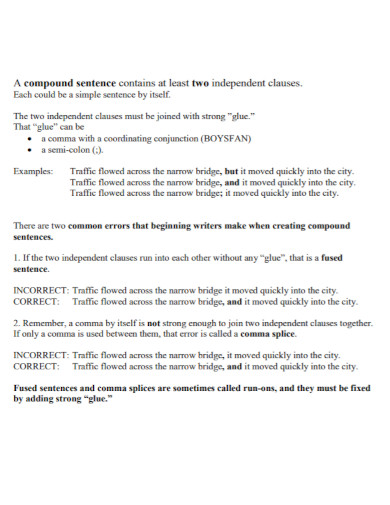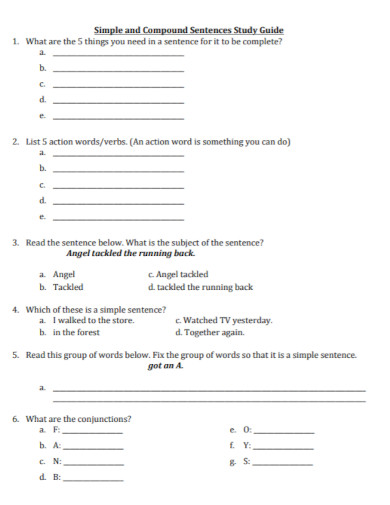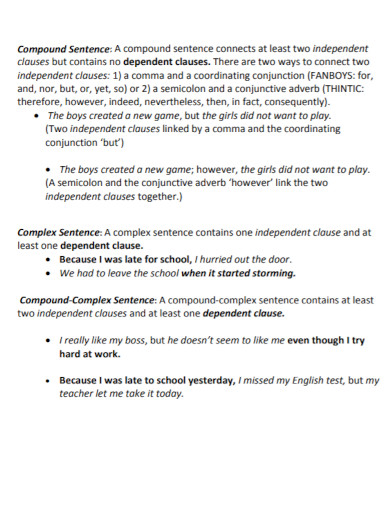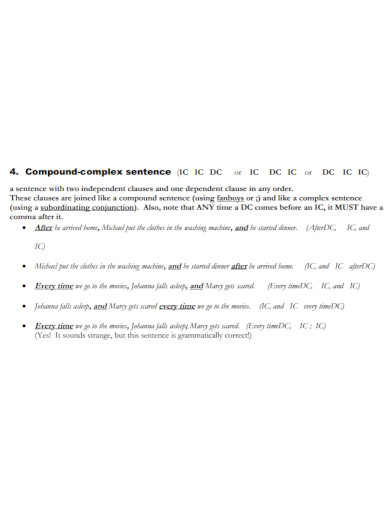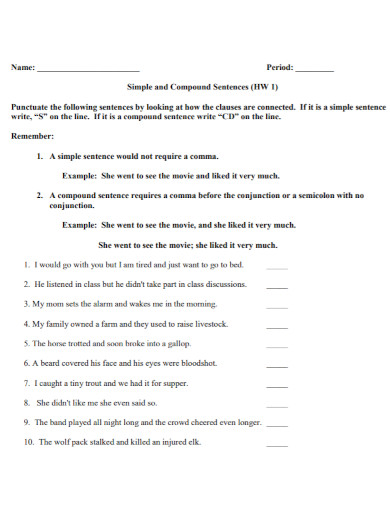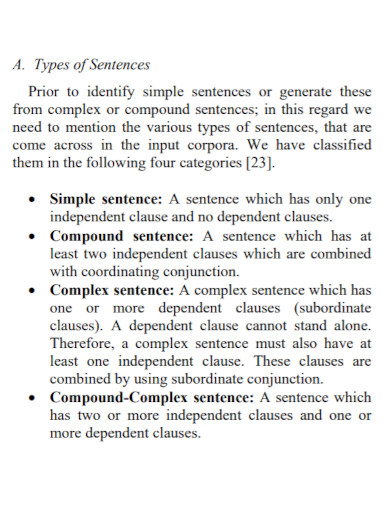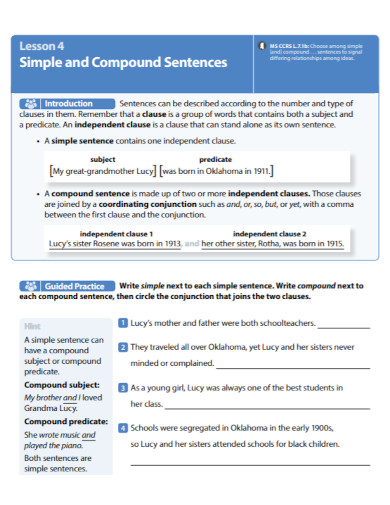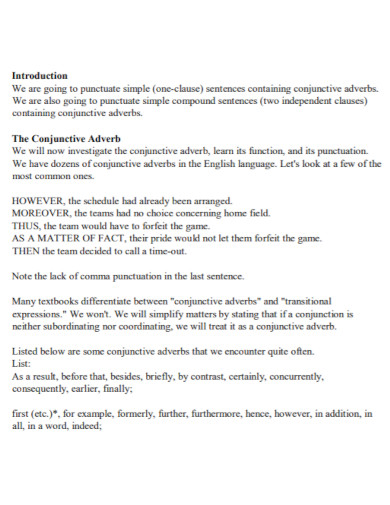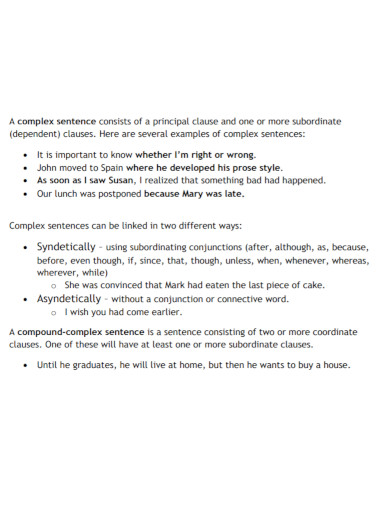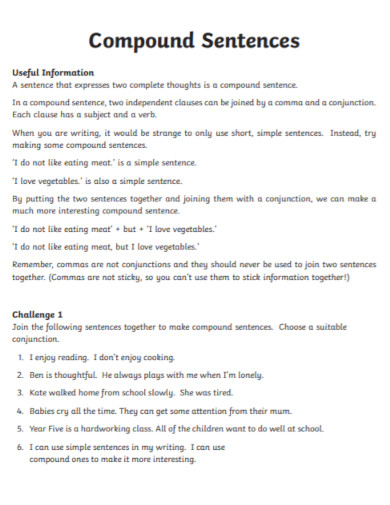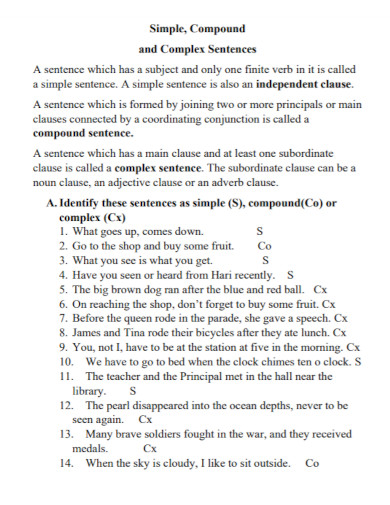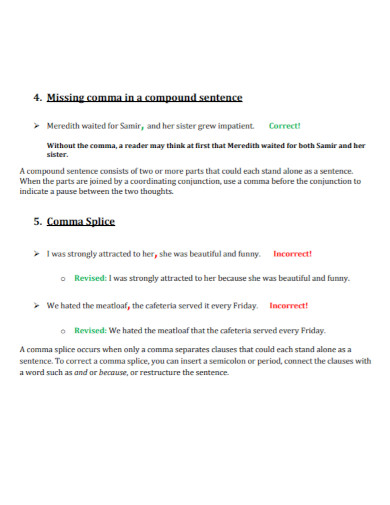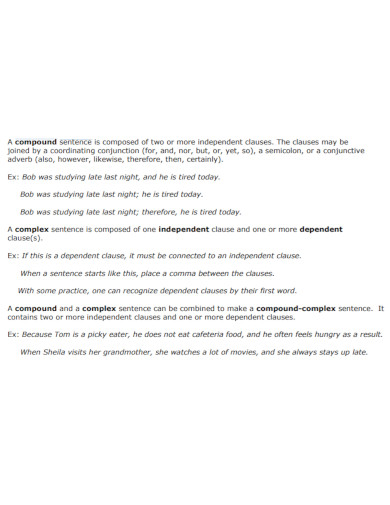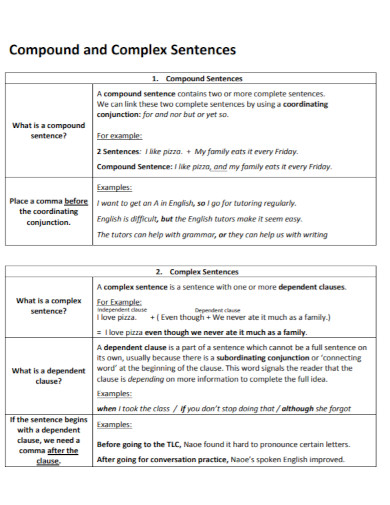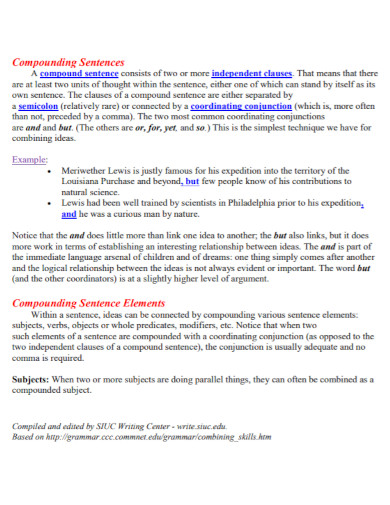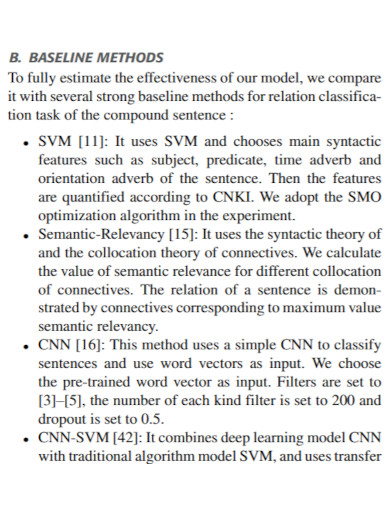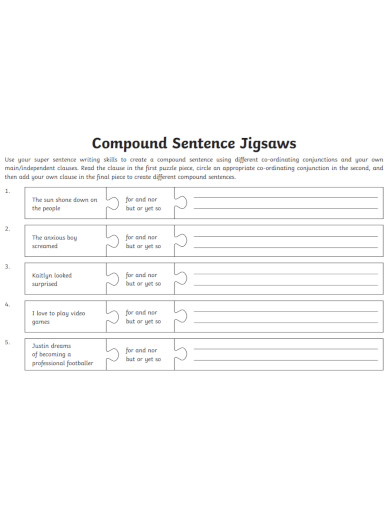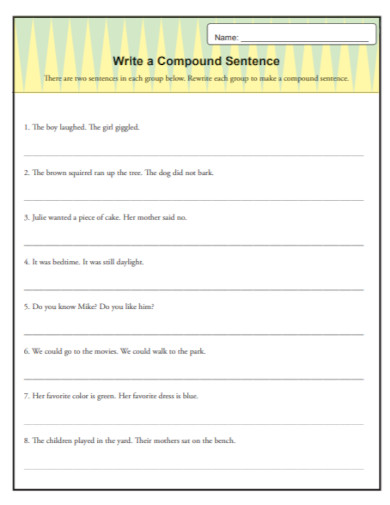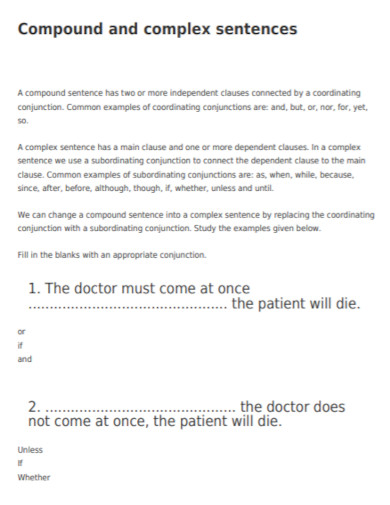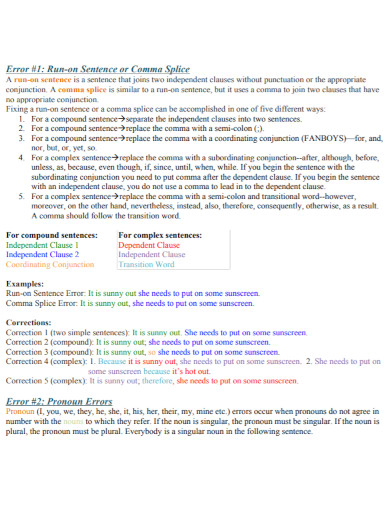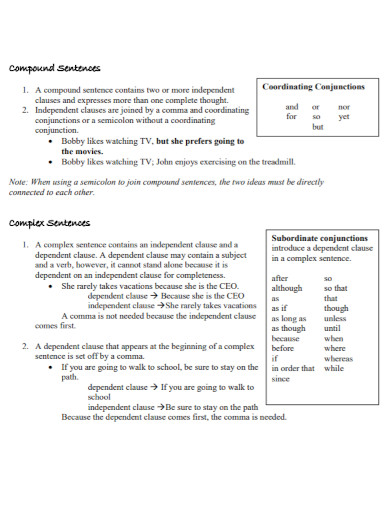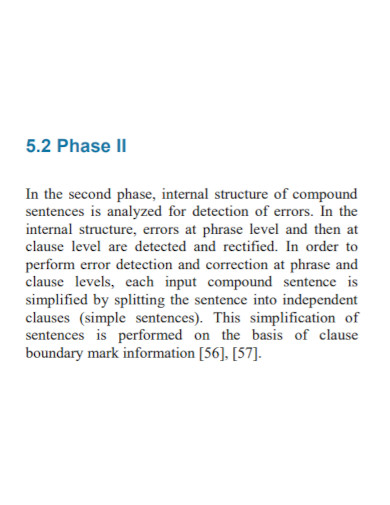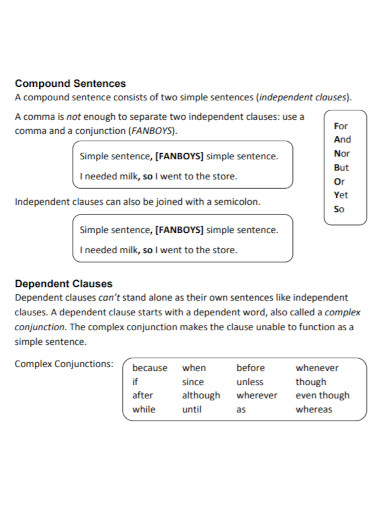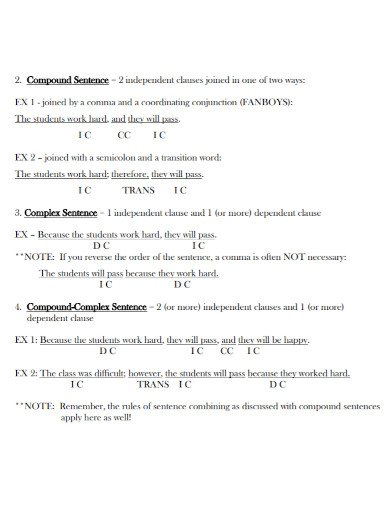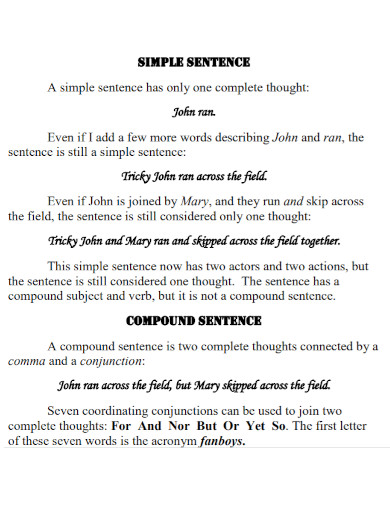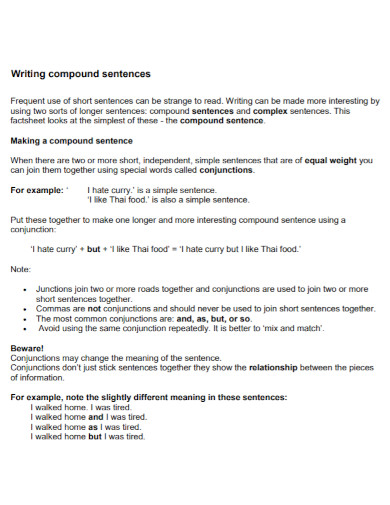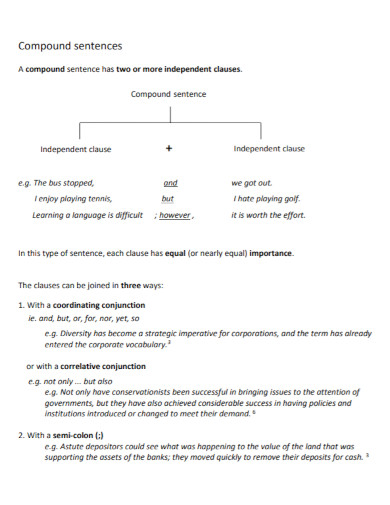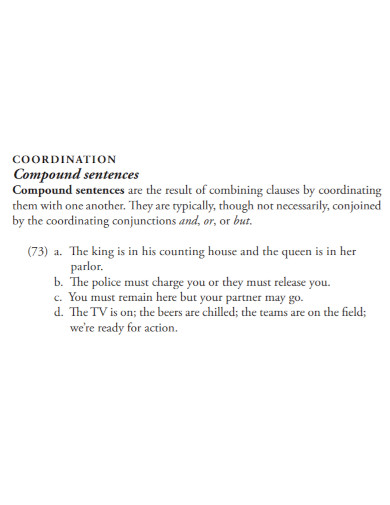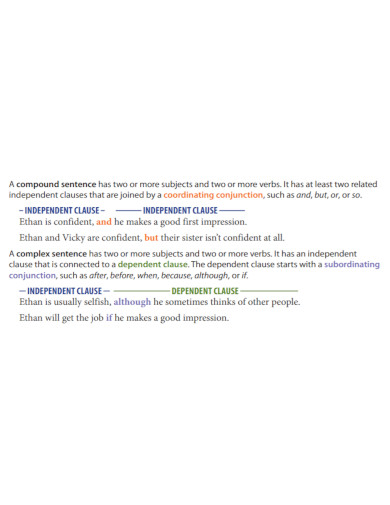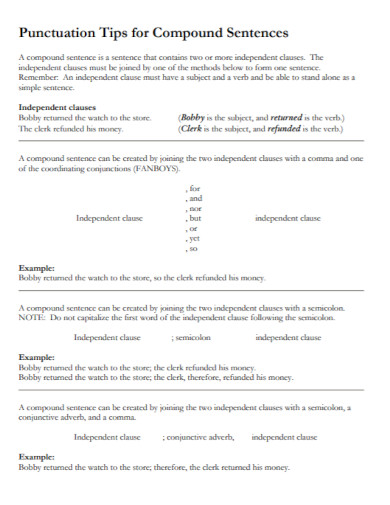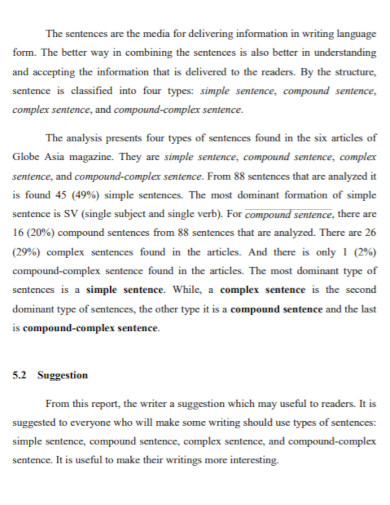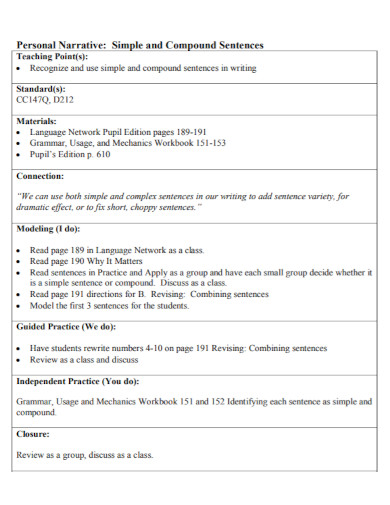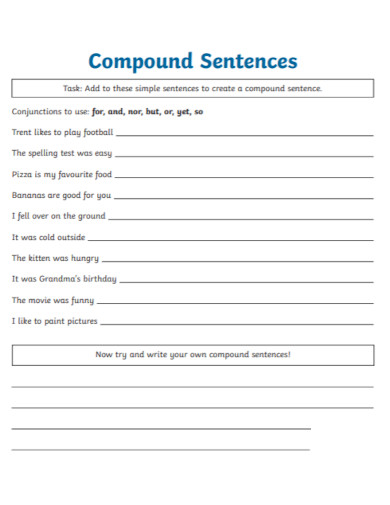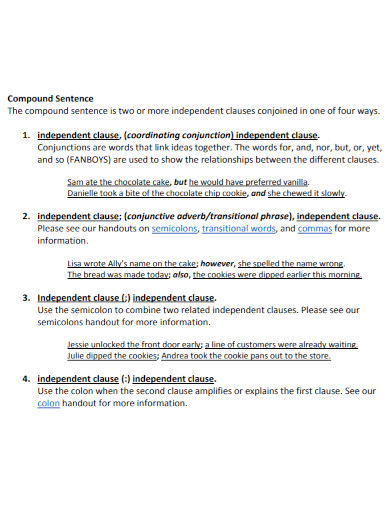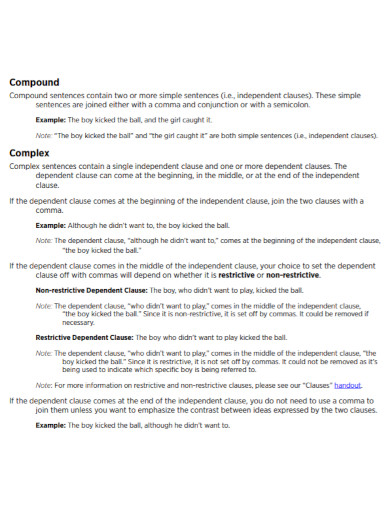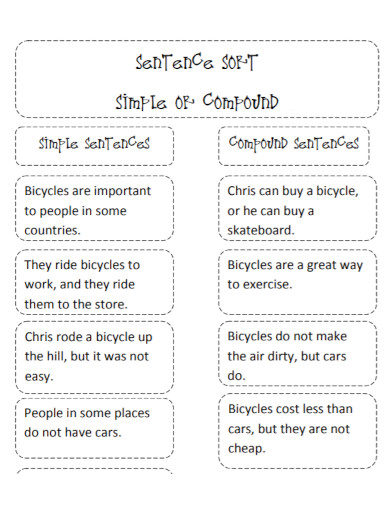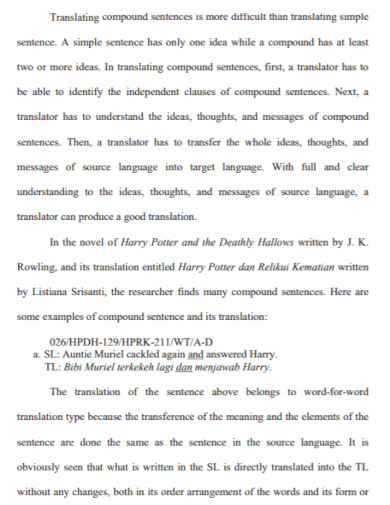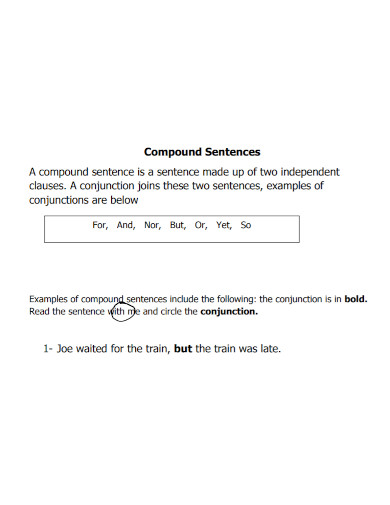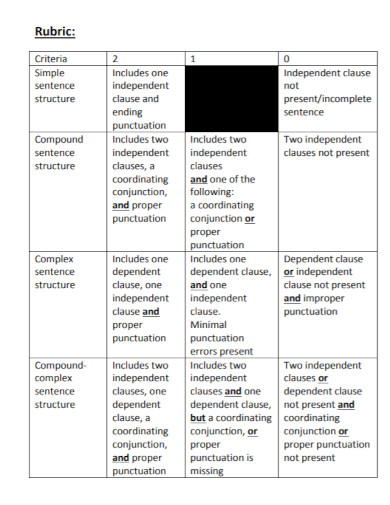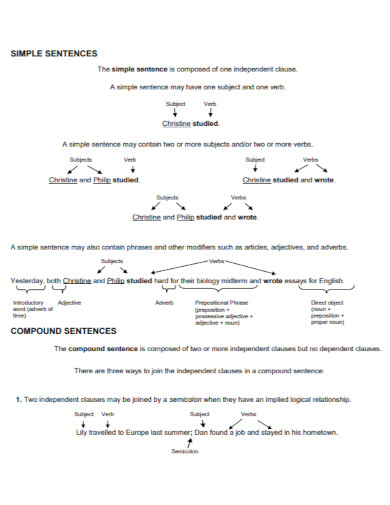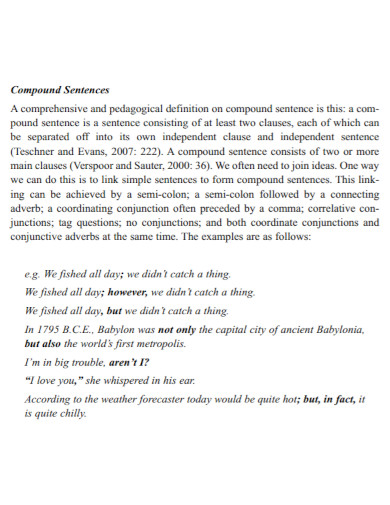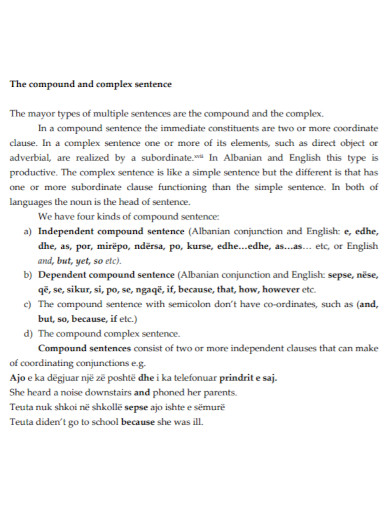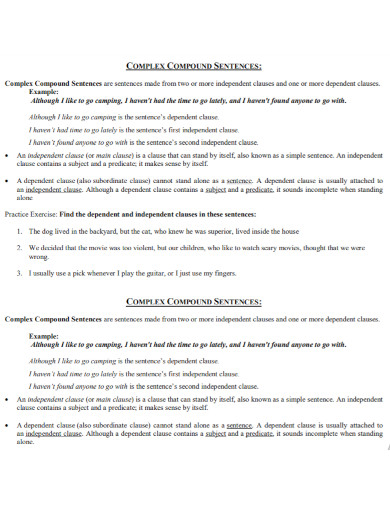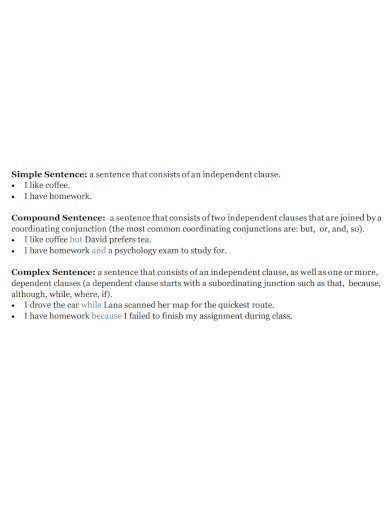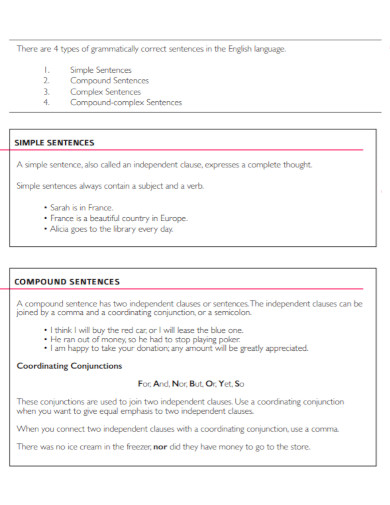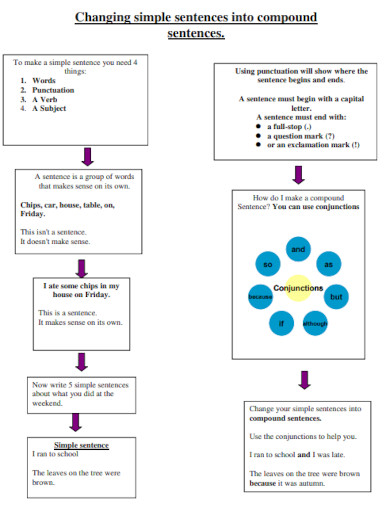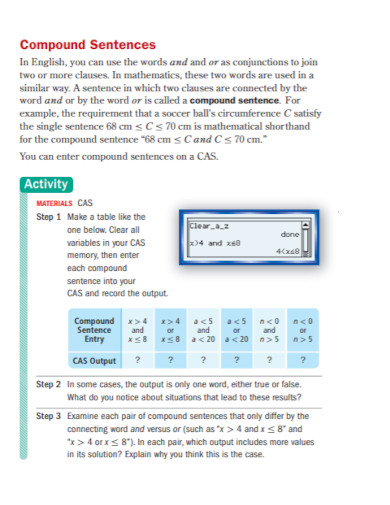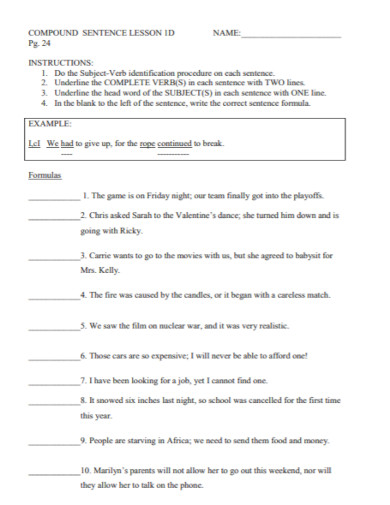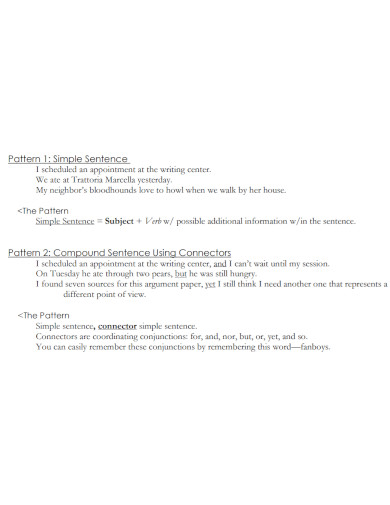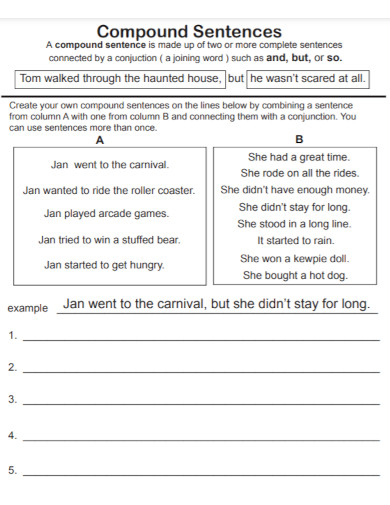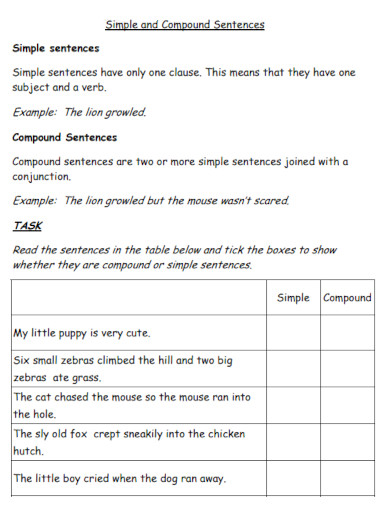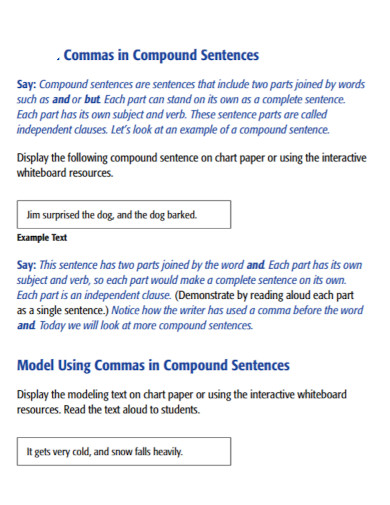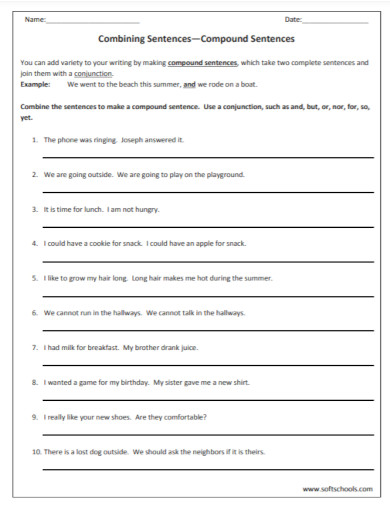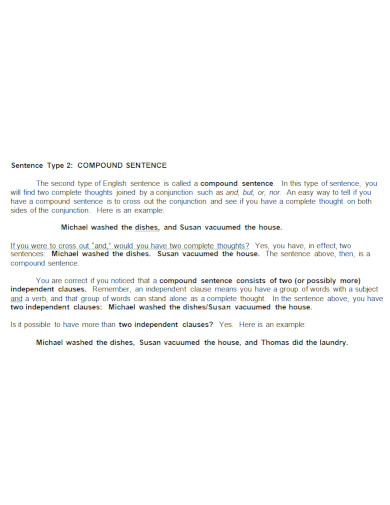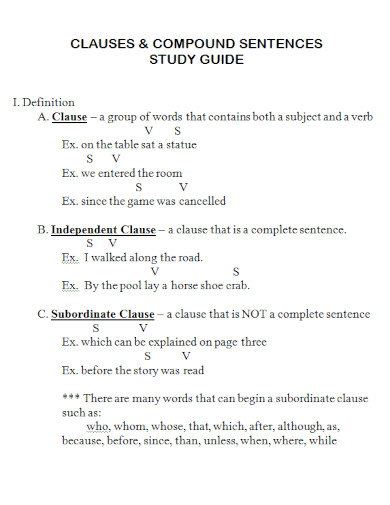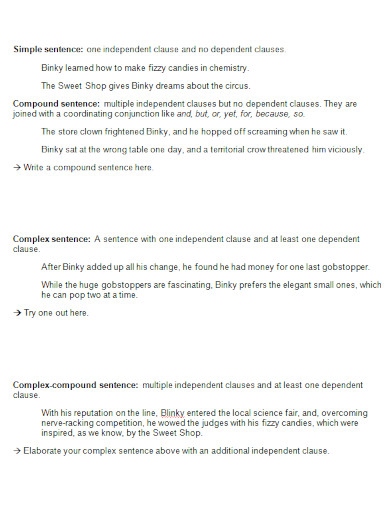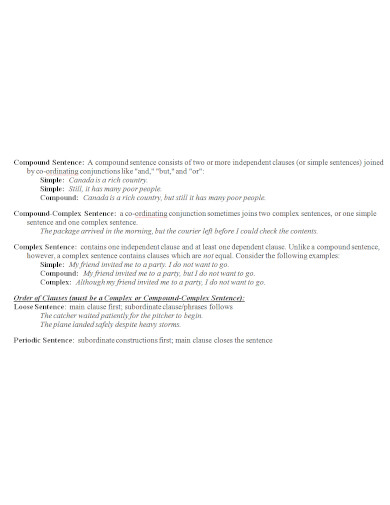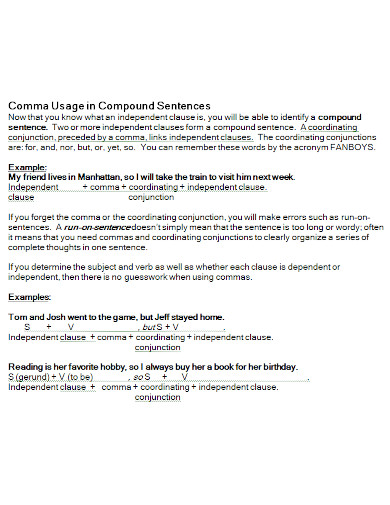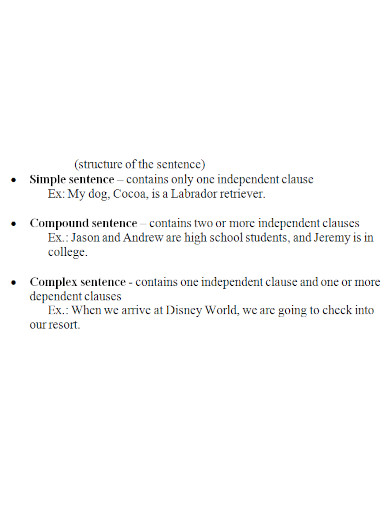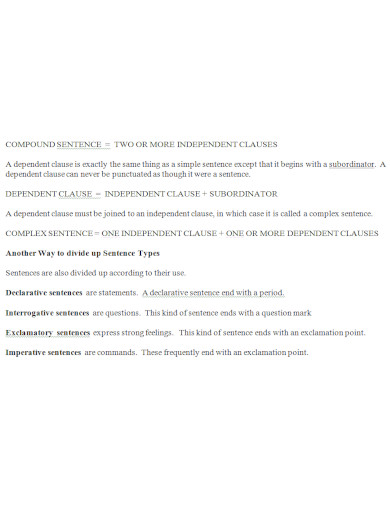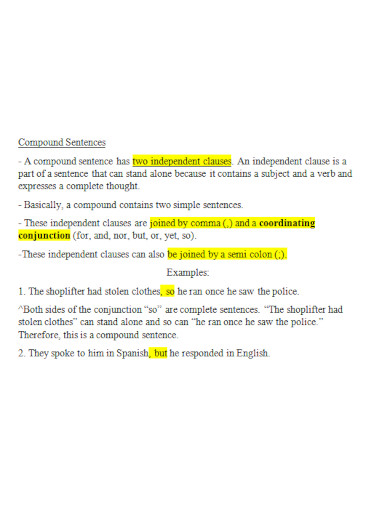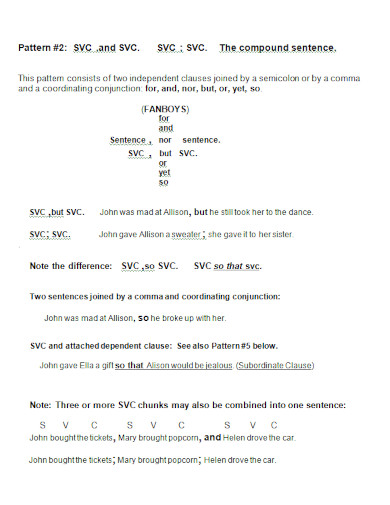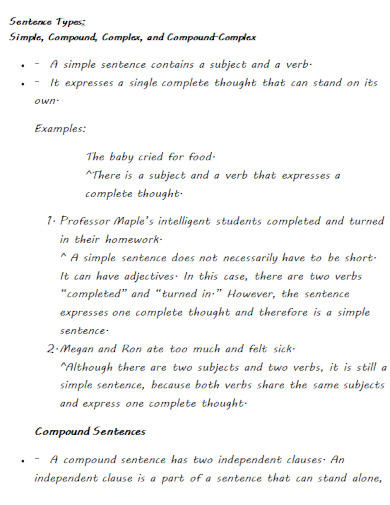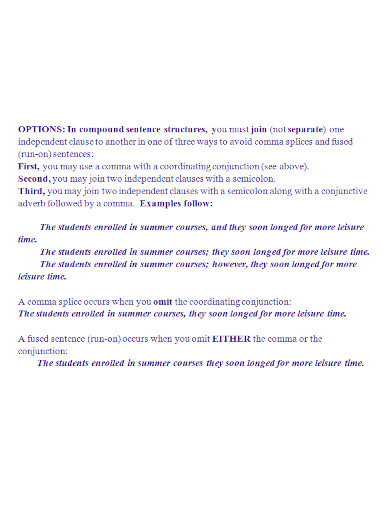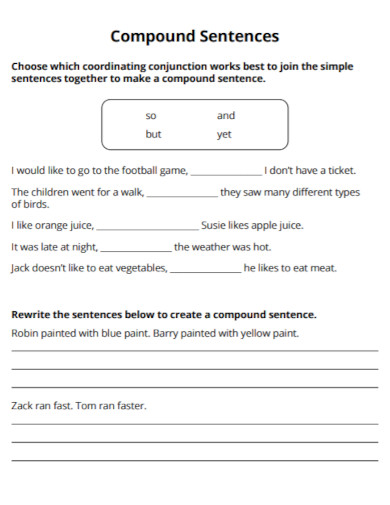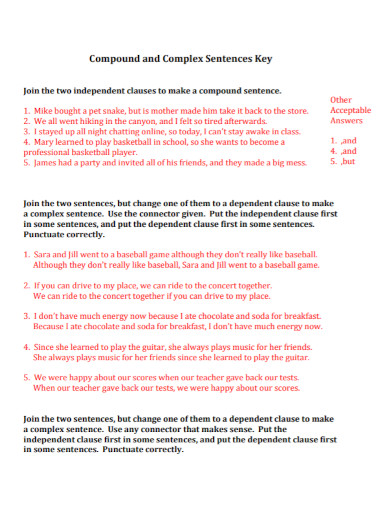100+ Compound Sentences Examples
While it is important to write sentences directly to the point, additional details can also be important. Additional details give more depth and meaning to your statements, making people understand you and the thoughts and ideas you want to put across. If writing using simple sentences is too direct, plain, and boring for you, you can always consider writing using compound sentences. With the use of compound sentences, you will not only be able to add more details to your written compositions, you will also be able to give your write ups a colorful turn which, as a result, will engage and encourage your readers to read more of your writings. Learn more about the compound sentences and the methods of writing one with the help of this article. We also provide you with examples to help you create your own.
100+ Compound Sentences
1. The Compound-Complex Sentence
2. Compound Sentences Template
3. Independent Clauses in Compound Sentences
4. Compound Sentences and Types
5. Simple Compound Sentences
6. Examples of Compound Sentences
7. Basic Compound Sentence
8. Printable Compound Sentences
9. Compound Sentences Comma Usage
10. English Compound Sentences
11. Making of Compound Sentence
12. The Compound Sentences
13. Simple and Compound Sentences
14. Compound Sentences Worksheet
15. Compound Sentences Combining
16. Compound Sentences Handout
17. Compound Sentences Conjunctions
18. Compound Sentences in PDF
19. Compound Sentences with Semicolon
20. Compound Sentences Case Study
21. Compound Sentence Joiners
22. Commas in Compound Sentences
23. Grammar Compound Sentences
24. Structural Compound Sentences
25. Compound Sentence with BOYSFAN
26. Simple and Compound Sentence in PDF
27. Two Ways of Compound Sentences
28. Compound-Complex Sentences
29. Sample Compound Sentences
30. Formal Compound Sentences
31. Compound Sentence in Poetry
32. Compound Sentences Lesson
33. Adverbs in Compound Sentences
34. Standard Compound Sentences
35. Compound Sentences with “And”
36. Short Compound Sentences
37. Compound Sentences Format
38. Compound Sentences for Class
39. Missing Comma in a Compound Sentences
40. Compound Sentence Example
41. General Compound Sentences
42. Compound Sentences with Elements
43. Compound Sentences Methods
44. One Page Compound Sentences
45. Simple Compound Sentences Format
46. Compound Complex Sentences Example
47. Compound Sentences Errors
48. Coordinating Conjunctions Compound Sentences
49. Compound Sentences Terms
50. Analysis of Compound Sentences
51. University Compound Sentences
52. Compound Sentences with Clauses
53. Professional Compound Sentences
54. Compound and Simple Sentences
55. Compound Sentence Example in PDF
56. Two Types of Compound Sentences
57. Coordination Compound Sentences
58. Compound Sentence Presentation
59. Students Compound Sentences
60. Punctuation for Compound Sentences
61. Compound Sentence Informative
62. Compound Sentence Narrative
63. Compound Sentences Assignment
64. Compound Sentences Structure
65. Sample Compound Sentence Examples
66. Compound Sentences Sort
67. Translating Compound Sentences
68. Compound Sentence Literacy
69. Compound Sentences Rubric
70. Compound Sentence Template in PDF
71. Comprehensive Compound Sentences
72. Compound Multiple Sentences
73. Simple Compound Sentence Format
74. Complex Compound Sentences
75. Basic Compound Sentence Example
76. Compound Sentence in the English Grammar
77. Compound Sentence Changing
78. Confidential Compound Sentences
79. Compound Sentences Activity in PDF
80. Compound Sentences Simple Lesson
81. Compound Sentences Using Connectors
82. Compound Sentence Sample
83. Draft Compound Sentences
84. Compound Sentences with Commas
85. Compound Sentence for Children’s
86. Compound Sentences in DOC
87. Compound Sentences Practice
88. Clauses with Compound Sentences
89. Compound Sentences Types in DOC
90. Simple Compound Sentence Template
91. Comma Usage in Compound Sentences in DOC
92. Structure of Basic Compound Sentence
93. Compound Sentences Example in DOC
94. Printable Compound Sentences Example
95. Compound Sentences Patterns
96. Compound Sentences for School
97. Compound Sentences Sheets
98. Compound Sentences Different Structures
99. Compound Sentence Review
100. Compound Sentence Key
101. Compound Sentence with Rules
What Is a Compound Sentence?
Compound sentences contain two or more independent clauses that are joined together using three methods: a coordinating conjunction, a semicolon, and a transitional expression. Do not confuse a compound sentence with a complex sentence because complex sentences are composed of independent clauses joined with a dependent clause while compound sentences are composed of two or more independent clauses that are joined together using coordinating conjunctions. A clause is a group of related words which consists of a subject and a verb. There are two types of independent clauses, namely: the independent clause and the dependent clause. Compound sentences have two independent clauses joined by coordinating conjunctions or coordinators. An independent clause is a type of clause that can stand by itself and can sometimes be considered as a simple sentence since it has a subject and a verb that expresses a complete thought in a more direct manner. You can find compound sentences in speeches, reports, essay writing and even informative speeches. There are a lot of examples you can use compound sentences with.
There are three ways or methods of writing and joining two independent clauses in order to create a compound sentence. Method 1: Use a Comma and a Coordinating Conjunction. Formula: independent clause + comma (,) + coordinating conjunction + independent clause = compound sentence. A comma and a coordinating conjunction can be used to connect independent clauses in forming compound sentences. Make sure that the comma is placed before the coordinating conjunction. Coordinating conjunctions also called as coordinators, join two independent clauses in order to construct a compound sentence. There are seven coordinators and these are the following: for, and, nor, but, or, yet, so. The seven coordinators can be memorized by the use of the mnemonic FANBOYS.
Method 2: Use a Semicolon (;) Formula: independent clause + semicolon (;) + independent clause = compound sentence. The purpose of the semicolon is like that of a period. The semicolon puts a stop between two independent clauses but the difference between a semicolon and a period is that the word that starts after the semicolon is not in capital letters. Make sure you do not use a semicolon when you form separate compound sentences. Make sure you use semicolons between two clauses with similar and related ideas so that the connection between two things is clear.
Method 3: Use a Semicolon with a Transitional Expression. Formula: independent clause + semicolon (;) + transitional expression + comma (;) + independent clause = compound sentence. To express or show how two ideas are related to each other, the use of a transitional expression is encouraged. Transitional expressions also help in expressing or showing how one sentence is also related to its preceding statement. It is best to use a transitional expression along with a semicolon in order to make the connection between two clauses smooth and make it easier to be understood. Here are some of the transitional expressions: indeed, further, as well (as this), either, neither, not only (this) but also (that) as well, also, moreover, what is more, as a matter of fact, in all honesty, furthermore, in addition (to this), besides (this), to tell the truth, in fact, actually, to say nothing of, too, let alone, much less, additionally, alternatively, on the other hand, and not to mention (this). To easily show relationships between two group of words with similar ideas, here are some of the ways:
If you want to add another similar thought or idea it is best to use the transitional expressions also, in addition, and moreover. If you want to show how two ideas are contrasting, you use: however, in contrast, and on the other hand. If you want to indicate a result or an effect on a particular cause, using therefore, as a result, and consequently will be the effective transitional expressions to use. If you want to cite examples, the transitional expressions for example, for instance, and a case in point are important so there will be no confusion. If you are to list points in chronological order, using first, second, third; and next; then that is all you have to do so that you will be able to properly indicate the order of things.
Additional notes and reminders: A comma should always be added after the transitional expression. A transitional expression is not either a coordinating or a subordinating conjunction. This also means that it can never join, grammatically, clauses together. This is the reason why transitional expressions and semicolons should always go together when joining two independent clauses. Always use a semicolon or period before the transitional expression and never a comma. If you use a comma, it will result in a run-on sentence. This is a very common error that most of us would commit and that is why you should make sure to keep in mind the formula while writing this method of writing compound sentences which is: independent clause + semicolon (;) + transitional expression + comma (;) + independent clause.
Tips for Using and Writing Compound Sentences
You may have gone through this in class before. Your teacher may have taught you some basic ways to write compound sentences. But these tips are also here to expound what you may have already been taught.
1. Remember the Format
When you plan on writing out compound sentences, remember the format. What is the format you ask? If you start with a past tense of the verb, the second part of your sentence must also be past tense. You cannot write a compound sentence with just one sentence or a different thought.
2. Separate Two Independent Clauses
Writing compound sentences always add the comma to separate both. The purpose for this is to let the reader understand that there are two different sentences that independent clause + comma (,) + coordinating conjunction + independent clause = compound sentence. Formula: independent clause + semicolon (;) + independent clause = compound sentence. independent clause + semi-colon (;) + transitional expression + comma (;) + independent clause = compound sentence.
3. Avoid Any Fragments
Avoid writing fragmented sentences when writing out compound sentences. Fragmented sentences do not make any sense and would only make your sentences look lacking. In addition to that, fragments make your sentence as a whole, sound as if you have not prepared on what you want to write. It makes your sentences look chaotic or look unprepared.
4. Classroom Activity
Let your students rewrite two simple sentences into a compound sentence. Whether they choose to use a comma, a semi colon, or both. It also depends on which they may use, by, or, and. Give them the opportunity to explore when writing compound sentences.
5. Essay Writing
Essay writing is a good example to use compound sentences. Essay writing helps you formulate your sentences properly, and with that you are able to make better sentences with practice. Think of a topic you want to talk about and write it in the form of an essay. Your compound sentences should also be present. Remember that compound sentences are there to connect two simple sentences that either have the same thought or may differ but they still make sense.
FAQs
What is a compound sentence?
A compound sentence is a kind of sentence that consists of two independent clauses. It is separated with either a comma or a semicolon. A compound sentence is merged to make two simple sentences into one thought.
What are some examples of compound sentences?
Here are some examples of compound sentences: “She and my sister Mary are classmates, but they are not friends.” “Ted is painting the room blue, and Rod is painting the ceiling white.” “I’ll take the left road, or you can take it.”
Why is a compound sentence so important to learn?
The purpose of a compound sentence is to connect two simple sentences together to make one whole new sentence. It spares you the time and effort to write out simple sentences when you want to write out a whole thought altogether.
With the help of these methods and given examples, we hope that you will already be able to compose your own compound sentences with more understanding of what it is about and more variety this time around.



